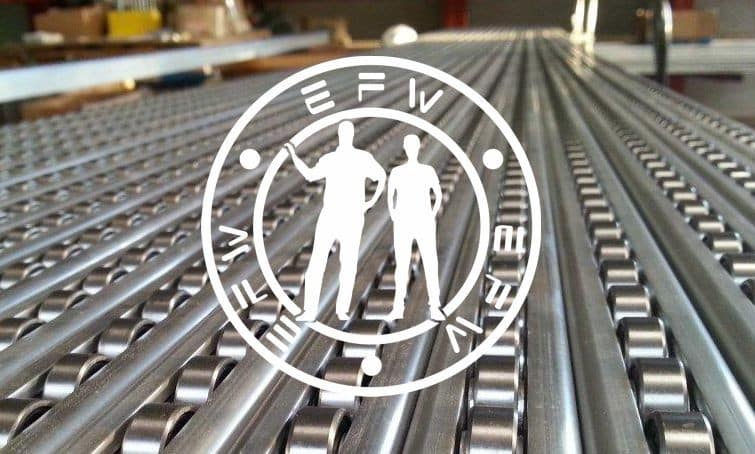In the face of unprecedented challenges, I am sure you all agree with me that businesses across various sectors are grappling with disruptions and uncertainties.
The COVID-19 pandemic and its aftermath have underscored the critical importance of efficient spare parts management. With supply chain disruptions, production delays, and increased demand for repairs, organizations must prioritize effective spare parts management to ensure continuity and optimize operational efficiency.
Just think about the last time you asked your internal warehouse for a straightforward spare part to restart your production and meet your deadline. And, in the worst moment, the news arrives: “We don’t have this part anymore. We need to re-order.” The result of this inefficiency in spares management may have led to a complete plant shutdown and elevated shipping costs when you tried to get the missing part delivered as soon as possible.
Most likely, you felt helpless and disappointed at that moment.
By recognizing the urgency and implementing robust strategies, your organizations can navigate through uncertainties, minimize downtime, and meet customer expectations.
Where to start?
Initially, we need to agree about some facts:
- The global supply chain network has experienced unprecedented volatility in recent times. Lockdowns, border restrictions, and shifting demand patterns have disrupted the flow of goods and spare parts across countries.
- Many spare parts, especially those that are specialized or sourced from distant suppliers, have long lead times. Lengthy lead times can disrupt operations, prolong equipment downtime, and hinder timely repairs. It Your organizations must develop strategies to mitigate the impact of long lead times and ensure the availability of critical spare parts when needed.
- Managing a complex and fragmented supplier network poses challenges in terms of maintaining consistent quality, managing relationships, and ensuring timely deliveries. Coordination and communication across multiple suppliers can be time-consuming and prone to errors.
- Spare parts inventory management can be challenging due to the risk of holding obsolete or excess inventory. Technological advancements, equipment upgrades can render certain spare parts obsolete. And some electronic parts need to be used within a certain time. Holding excessive inventory ties up capital occupies valuable storage space, and increases the risk of inventory write-offs.
Do you agree with me? I am sure that we are totally aligned.
We are ready for the next step.
To establish effective spare parts management, you should follow a systematic approach that encompasses various aspects of inventory planning, procurement, storage, and maintenance.
We perform several audits in the GRP production plants and I would like to share with you some key steps to start implementing a good spare parts management system:
- Conduct a Spare Parts Assessment: Begin by conducting a thorough assessment of your spare parts inventory. Identify and categorize spare parts based on criticality, usage frequency, and lead times. Determine which parts are essential for maintaining operations and prioritize them accordingly. This assessment will provide a baseline understanding of your spare parts inventory and aid in subsequent decision-making processes.
- Establish Optimal Stock Levels: Determine the optimal stock levels for each spare part based on factors such as historical usage data, lead times, and criticality. But take care! At the same time, you need to employ forecasting techniques to estimate future demand and unusual long deliveries and calculate safety stock levels to account for uncertainties. Balancing the costs of holding inventory against the risk of stockouts is crucial in determining the right stock levels.
- Centralize Spare Parts Inventory: Consolidate your spare parts inventory into a centralized location or system. This centralization allows for better visibility, improved coordination, and efficient inventory management. Implement an inventory management software or system that enables real-time tracking, automatic reorder points, and easy access to inventory data.
- Implement Inventory Control Measures: Establish robust inventory control measures to ensure accuracy and minimize discrepancies. This includes implementing procedures for receiving and inspecting spare parts, conducting regular stock audits, and monitoring inventory movements.
- Implement Preventive Maintenance Practices: Invest in preventive maintenance practices to reduce the need for spare parts. Develop maintenance schedules, conduct regular inspections, and perform necessary servicing to extend the lifespan of equipment and components. Proactive maintenance minimizes unplanned breakdowns, optimizes equipment performance, and reduces the reliance on spare parts.
- Continuous Improvement and Evaluation: Regularly review and evaluate your spare parts management system. Assess the performance of your inventory control measures, supplier relationships, and maintenance practices.
- Embrace Data Science and improve the Spare parts lifetime: This revolutionary approach to GRP production binds the power of analytics, simulations, and predictive modeling to transform the way your GRP plant will operate.
By following these steps, you will establish a solid foundation for efficient spare parts management. Remember that spare parts management is an ongoing process that requires continuous monitoring, adjustments, and improvement to adapt to changing needs and optimize operations.
Don’t let inefficient spare parts management hold your organization back. Take the leap with Topfibra Audits and unlock the potential of data science to revolutionize your operations.

